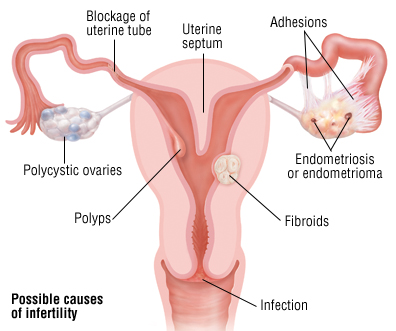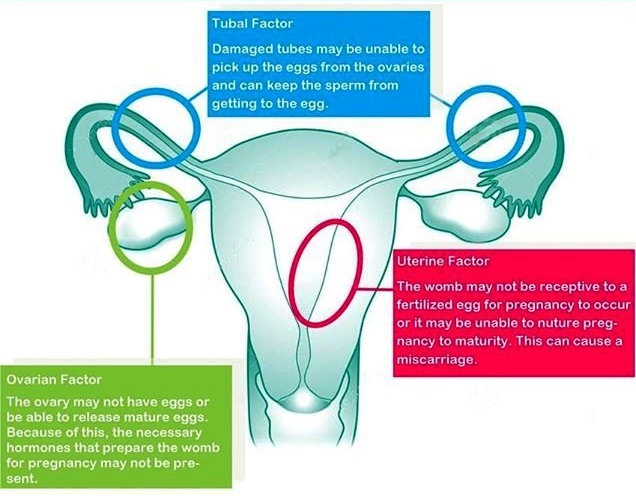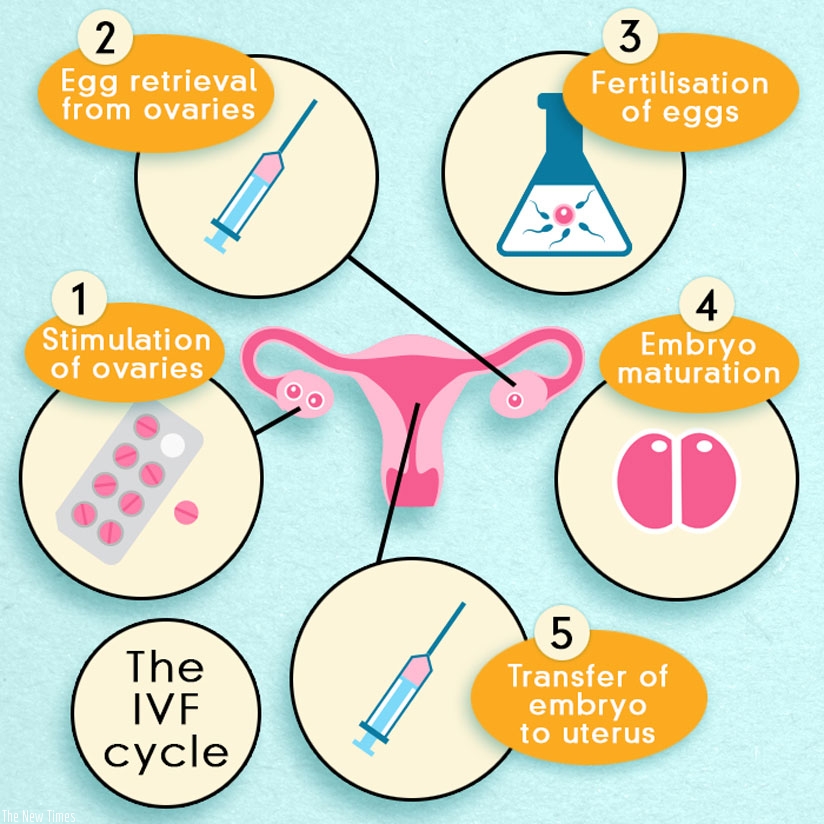Infertility means not being able to become pregnant, within certain parameters. It is a common problem of about 10% of women aged 15 to 44. Infertility can be due to the woman (33%), the man (33%) and by both sexes or due to unknown problems (33%), approximately. Infertility in men can be due to varicocele, low or absent sperm count, sperm damage or certain diseases.
Risk factors for men's infertility include alcohol and drug use, toxins, smoking, age, health problems, medicines, radiation, and chemotherapy. Risk factors for women's infertility include ovulation problems, blocked Fallopian tubes, uterine problems, uterine fibroid, age, stress, poor diet, athletic training, and those risk factors listed for men.
Aging decreases a woman's fertility; after age 35 about 33% of couples have fertility problems; older women's eggs are reduced in number, not as healthy and less likely to be released by the ovary – the woman is also more likely to have a miscarriage and other health problems.
Women under 35 should try for a year or 6 months if 35 or older to become pregnant before contacting their doctor if they have no health problems.
Follicular monitoring or follicular study is a vital component of in-vitro fertilization (IVF) assessment and timing. It basically employs a simple technique for assessing ovarian follicles at regular intervals and documenting the pathway to ovulation.
Laparoscopy, also known as diagnostic laparoscopy, is a surgical diagnostic procedure used to examine the organs inside the abdomen. It’s a low-risk, minimally invasive procedure that requires only small incisions.
Hysteroscopy is done to see if a problem in your uterus is preventing you from becoming pregnant (infertility). A hysteroscopy is a way for your doctor to look at the lining of your uterus. He or she uses a thin viewing tool called a hysteroscope. The tip of the hysteroscope is put into your vagina and gently moved through the cervix into the uterus. The hysteroscope has a light and camera hooked to it so your doctor can see the lining on a video screen.
Intrauterine or Artificial Insemination is the deliberate introduction of sperm into a female's uterus or cervix for the purpose of achieving a pregnancy through in vivo fertilization by means other than sexual intercourse.
During In vitro fertilization (IVF), eggs and sperm are brought together in a laboratory glass dish to allow the sperm to fertilize an egg. With IVF, you can use any combination of your own eggs and sperm and donor eggs and sperm. After IVF, one or more fertilized eggs are placed in the uterus.


